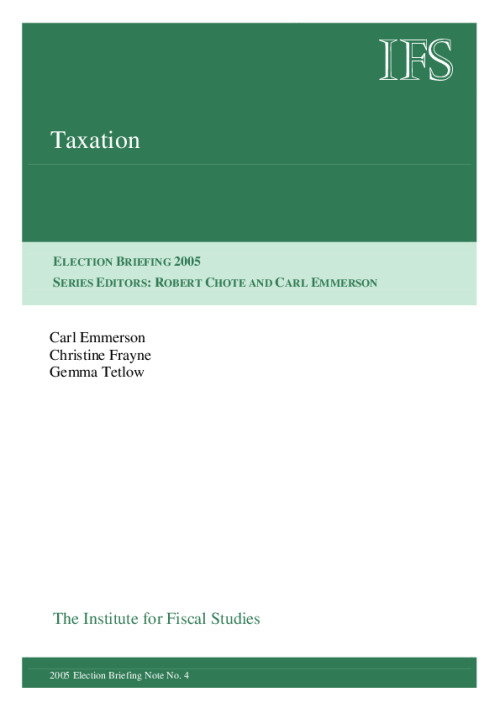This Briefing Note examines the evolution of the tax burden over the last 50 years. It then looks at the proposals in the parties' manifestos.
- Net taxes and National Insurance contributions have risen from 34.8% of national income in 1996ֹ7 to 36.3% in 2004ְ5. According to Treasury projections, these will rise to 38.5% of national income in 2008ְ9. This would be the highest level since 1984ָ5.
- Total government revenues have averaged 38.4% of national income under the two Labour governments, compared with 40.6% over the 18 years of Conservative government from 1979 to 1997. According to Treasury forecasts, revenues will equal 39.3% of national income in 2005ְ6, rising to 40.6% by 2009ֱ0. This would be the highest level since 1988ָ9.
- Over Labour's two parliaments since 1997, current receipts have risen by 3.5% a year on average, in real terms, while national income rose by 2.8% on average, leaving national income minus tax to rise at 2.4% on average.
- Of the total ò8.5 billion revenue increase seen since 1996ֹ7, ñ9.1 billion was due to discretionary changes to the tax system, with the remainder being due to the impact of the economy on overall revenues. The largest discretionary change occurred in the first Budget after the 2001 election (the Spring 2002 Budget), which increased taxes to yield an additional ù.9 billion by 2005ְ6.
- Between 1997 and 2005, the UK saw one of the highest increases in revenues among OECD countries, although the UK remains a low-tax economy compared with EU countries.










